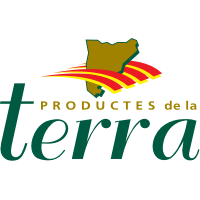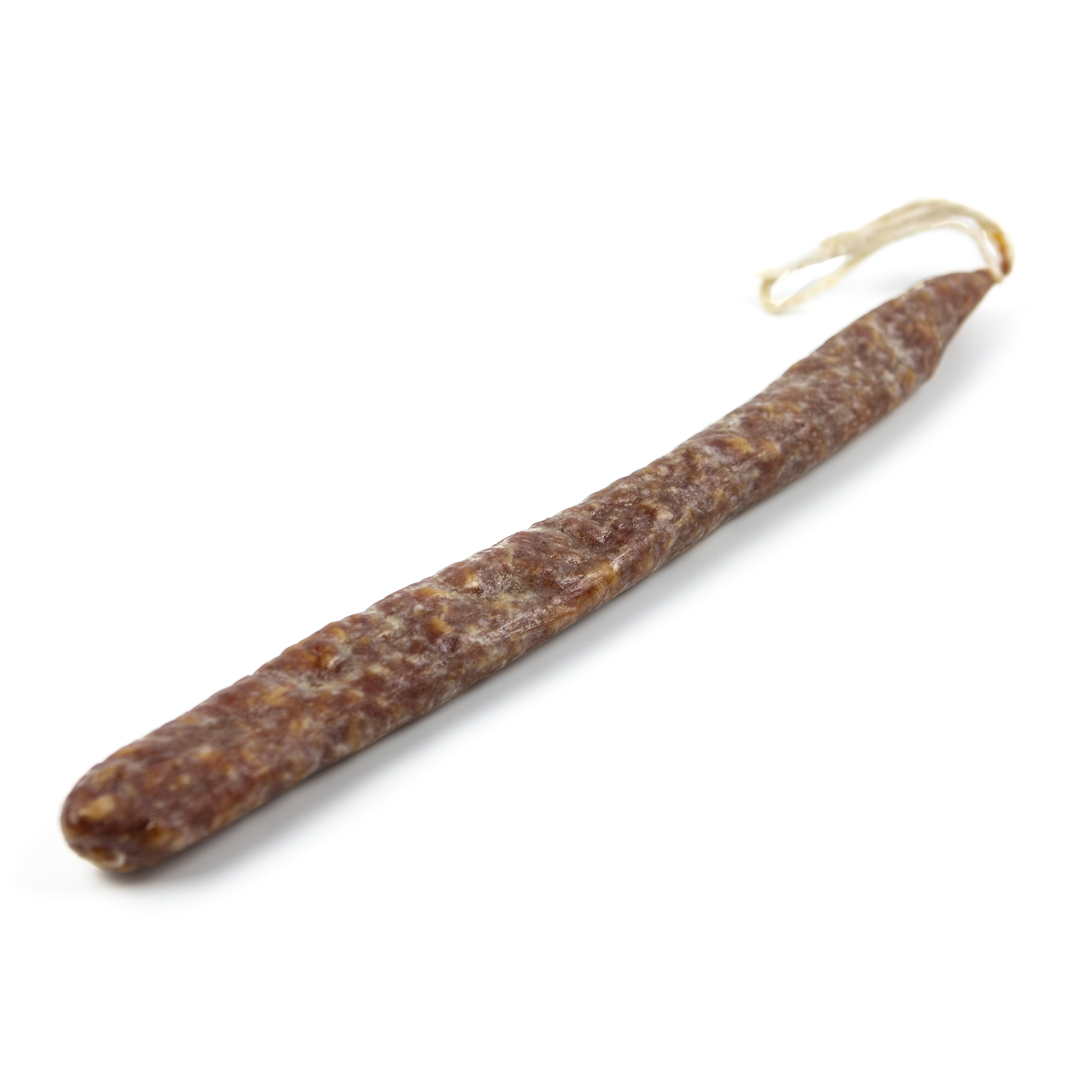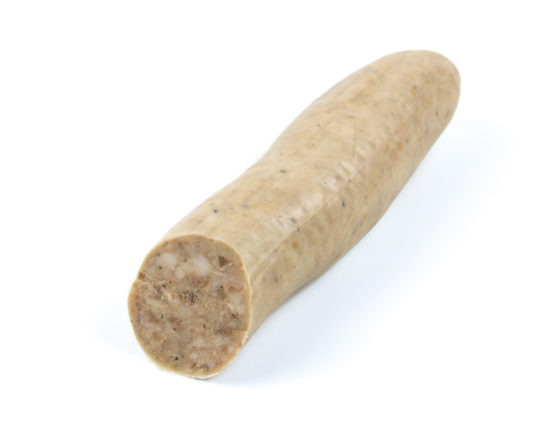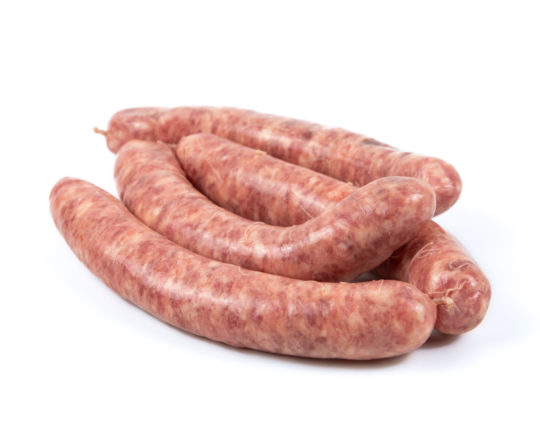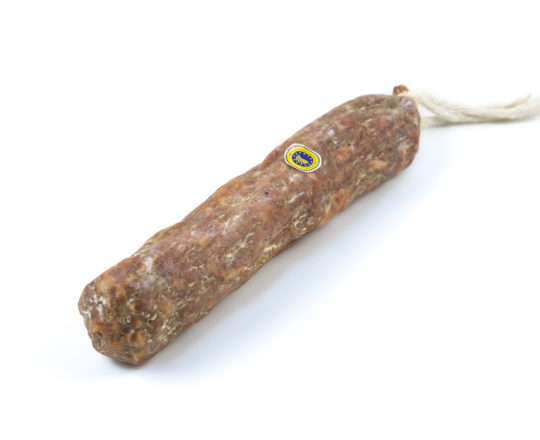Fuet
Aquest és un dels embotits més consumits arreu de Catalunya, gràcies a la seva gran difusió. Segons l'indret i el procés de curació adopta diferents formes i denominacions: espetec, secallona, somalla, entre altres.
És un embotit de forma cilíndrica, prim i allargat. S’emboteix en el budell prim del porc, amb un calibre que va des dels 32 als 48 mm, lligat. La llargada, variable, pot oscil·lar entre els 30-50 cm i el pes entre els 200 i els 300 g. Depenent del temps de curació, la presència de fongs per fora dona el color blanquinós de la superfície. La carn és d’un color rosat-vermellós intens, trencat per les taques blanquinoses dels bocins de greix. La textura és lleugerament granelluda. Per elaborar-lo, se seleccionen les carns de pernils i espatlles, preferentment, i també carn magra i lloms, en menor proporció, es trinxen i se salpebren. Fins aquí el procediment és el mateix que per elaborar botifarra crua. A continuació, s’emboteix en el budell prim del porc i, un cop embotit, se’l posa a assecar. Durant el procés de curació es produeix la fermentació i l’aparició dels fongs, que atorguen a aquests embotits les seves característiques definitòries.
Territori
- Alt Camp
- Alt Empordà
- Alt Penedès
- Alt Urgell
- Alta Ribagorça
- Anoia
- Bages
- Baix Camp
- Baix Ebre
- Baix Empordà
- Baix Llobregat
- Baix Penedès
- Barcelonès
- Berguedà
- Cerdanya
- Conca de Barberà
- Garraf
- Garrotxa
- Gironès
- Les Garrigues
- Maresme
- Moianès
- Montsià
- Noguera
- Osona
- Pallars
- Pallars Sobirà
- Pla d'Urgell
- Pla de l'Estany
- Priorat
- Ribera d'Ebre
- Ripollès
- Segarra
- Segrià
- Selva
- Solsonès
- Tarragonès
- Terra Alta
- Urgell
- Val d'Aran
- Vallès Occidental
- Vallès Oriental





Distintius
Calendari de temporada
- GEN
- Feb
- Mar
- Abr
- MAi
- JUN
- JUL
- AGO
- SET
- OCT
- nov
- DEs
Informació complementària
El fuet pertany a la família dels embotits tradicionals crus curats, que són els que han estat sotmesos a un procés d'assecatge, de curació. De l'amanida inicial en surt la botifarra crua; si es penja entre 8 i 10 dies s'obté la secallona; i si s’asseca durant un temps més, el fuet. S'explica el terme "fuet" pel fet que, un cop sec, s'assembla un fuet, una vara de fuetejar. El terme "espetec" s'explica pel soroll que fa en trencar-lo –espetega– quan és ben sec. El terme "somalla" ve del grau de curació, ja que en aquest cas es deixa “somallar”, és a dir, mig assecar.
Atributs i propietats nutricionals
Els fuets es comercialitzen en tota mena d’establiments. És un dels productes estrella de la cansaladeria, al costat de les llonganisses, atesa l’àmplia acceptació que té entre els consumidors de totes les edats. Forma part del consum quotidià, tant en forma d'entrepà, per esmorzar o berenar, com per picar a qualsevol hora.
